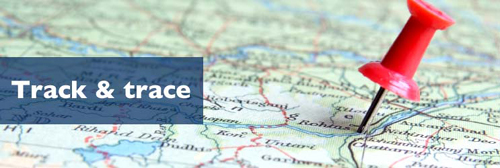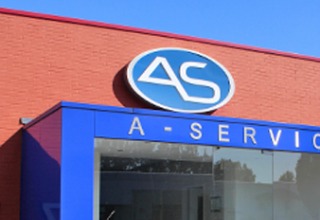STRICTER LEGISLATION AND REGULATIONS FOR THE TRANSPORT OF FOOD PRODUCTS | is there a need for an automated logging system to simplify compliance?
Monitoring temperature, automating consignment notes, door-closed checks, GPS and trailer identification: we are asked about these issues more and more often, and as such we expect this to become an increasingly important topic in the near future.
Our request to you this time: please read this knowledge article, see whether it is relevant to your company and, if you are interested, we warmly invite you to contact us. We can then begin investigating – without obligation – how we can develop a concrete solution.
Food transport: ever-stricter legislation and regulations
Our automated loading and unloading systems are often installed in trailers used for shuttle transport between warehouses and production locations. In many cases, this involves the transport of finished food products, or raw materials for food products.
Due in part to scandals, legislation and regulations covering food transport are becoming increasingly broad and strict. Food transport is subject to ever-greater monitoring and regulation.
Automated shuttle transport is a form of internal transport that takes place via public roads. This means the same regulations apply as in the case of external food transport via public roads, although the authorities often turn a blind eye in practice, as the distances involved are generally short.
Full compliance with the rules results in a considerable administrative burden, which is totally contrary to the concept of automated shuttle transport. If the physical loading and unloading takes 3 minutes, but the associated paperwork takes 20 minutes, then the system is clearly unworkable.
What if the paperwork could be organised automatically during the short loading and unloading process?
As a supplier of turn-key systems for automated shuttle transport, we are convinced that it is possible to comply with current and future legislation and regulations while keeping pace with the rapid loading and unloading speed of these systems.
This may include:
- Automatic identification of the trailer
- Automatic recording of the loading and unloading bay used
- Driver identification
- Pallet identification via automated label scanning
- Confirmation of approval of the load for the driver, once the loading process is complete
- Digital transfer of the complete consignment note to the trailer. This can be shown to the driver in various ways, or printed on paper in the truck.
- Automatic logging of the temperature in the trailer at set intervals during the loading and unloading process
- Automatic logging of GPS data at set intervals
- Automatic logging of door-closed checks
- During unloading, all collected data is transferred to the warehouse WMS
The system logs, documents and saves all relevant data about the movement of each pallet between two locations. At present, this is still a rough idea that needs to be developed into a robust system. We expect to be able to develop this relatively quickly and without too much difficulty.
We’re looking for sparring partners
As stated at the start of this article: by sharing this idea, we hope to make contact with possible interested parties to help fine tune the concept and, if there is sufficient interest, to develop it further. In summary: if your company is facing issues related to this topic, then I would be very interested in discussing these with you, without obligation.
e-mail: maas@a-service.nl
telefoon: +31 (0)541-521206.


